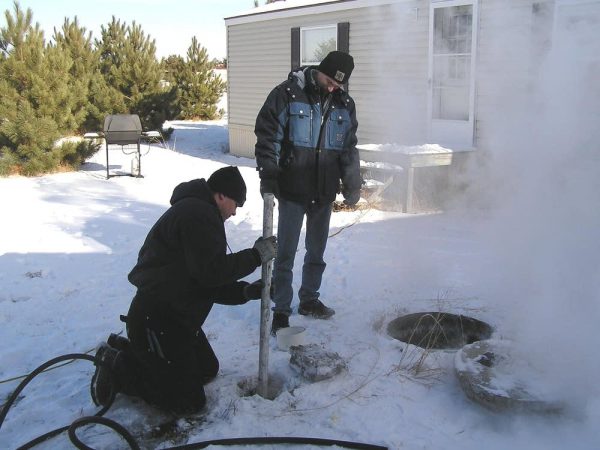Adventures in Home Owning: Holiday Fire Safety Tips

Dear Homeowner,
Last week we talked about the challenges home inspectors face when navigating a house that is covered with snow and ice. But what about those elements that live outside and away from the house? No home inspection is complete without a proper check on the septic system. This system, typically found a close distance from the house and next to the leach field, is your home’s own personal wastewater treatment. Typically divided into two chambers, wastewater enters the septic tank where solids settle towards the bottom and begin the process of decomposition. The liquids that remain flow through the dividing wall between chambers and continue the treatment process before finally being drained out into the leach field where the water will return to nourish the surrounding soil.
Essential to any home that is not connected directly to the local sewage system, maintaining a properly functioning septic tank is a very important part of homeowning. Damage to septic tanks can arise from a variety of different factors including a heavy vehicle driving overhead, poorly mixed concrete, or tree roots winding their way into the structure. If damaged, aside from costing the homeowner upwards of $15,000, it can also cause sewage to back up into the house, and strong odors to take over your lawn. Needless to say, if you are looking into purchasing a new property, or planning on selling your home, you will want to be confident that the septic tank is running properly and efficiently.
However, is a septic tank inspection even possible during the winter months? Unfortunately for those of us who live in climates that drop below the freezing point, day after day of cold eventually freezes the ground several feet down, allowing snow to pile on top of it without melting. Not only does this make it difficult to locate the septic tank, but it also makes it difficult to dig into the ground in order to unearth the tank. Luckily for us, we have several things working to our advantage: the first, sewage and wastewater naturally generates heat, which can help to keep the earth above the septic tank warmer and softer than the rest of you frozen lawn. Secondly, Norway Hill Home Inspections comes equipped to every winter inspection with a jackhammer that is capable of breaking through the frost line if a septic system is buried deep or the winter is simply too cold. Once breaking through the frost line, we are able to uncover and access your septic tank just as effectively as if it were summer.
In order to help us out in the winter months, be sure to learn the location of your septic tank during the warmer weather. If you’re having trouble locating the tank refer to any property maps you may have of your plot of land, or keep an eye out for that extra green patch of grass. Marking the tank with a stake will ensure its visibility once snow falls over the ground, and cut down on all of our time out in the cold!
Until next time, homeowner!
